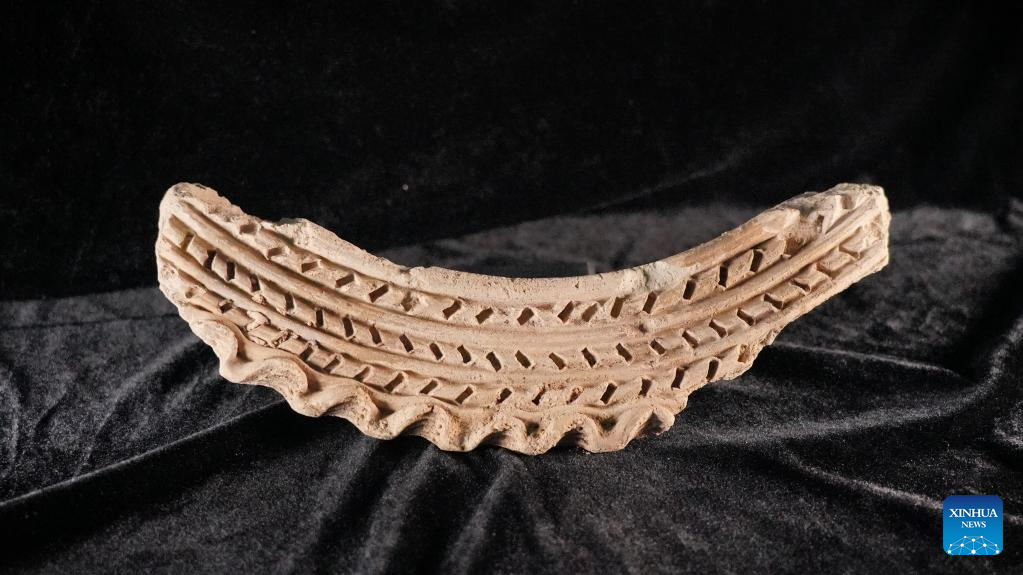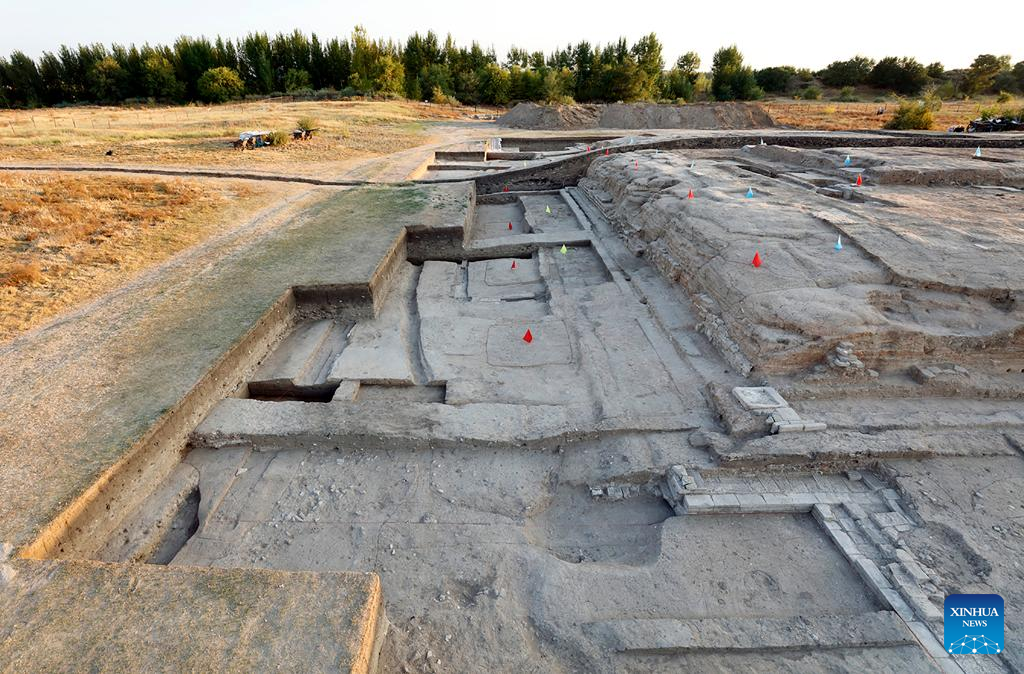
This photo taken on Dec. 23, 2022 shows a remnant discovered from the south-facing building relics in a courtyard of the imperial city in the ruins of Shangjing, the ancient capital of the Liao Dynasty (907-1125), in Lindong Township of Bairin Left Banner, north China's Inner Mongolia Autonomous region. (Xinhua)
HOHHOT, Feb. 21 (Xinhua) -- Archaeologists have discovered the ruins of a large building foundation in an imperial city dating back to the Liao Dynasty (907-1125) in north China's Inner Mongolia Autonomous Region.
The building relics were found in late 2022 in a courtyard of the imperial city in the ruins of Shangjing, the ancient capital of the Liao Dynasty, according to the regional institute of cultural relics and archaeology.
The Shangjing site, which was divided into two parts, including an imperial city, is located in Lindong Township of Bairin Left Banner, Inner Mongolia.
An array of artifacts including building components, ceramics, clay sculptures, and copper coins, have also been unearthed.
The nomadic Khitan founded the Liao Dynasty. Archaeologists said the Khitan people believed the east is where the sun rises and can bring auspiciousness and light, so the imperial city and palaces faced east.
The discovery of the large south-facing building has deepened archaeologists' understanding of the layout and history of the ancient Liao capital.
The building is believed to be an important royal establishment in the capital. Historical records show that the imperial city contained key structures such as temples and academies, which can provide some clues to the identity and purpose of the building. ■

This photo taken on Sept. 27, 2022 shows the south-facing building relics in a courtyard of the imperial city in the ruins of Shangjing, the ancient capital of the Liao Dynasty (907-1125), in Lindong Township of Bairin Left Banner, north China's Inner Mongolia Autonomous region. (Xinhua)



